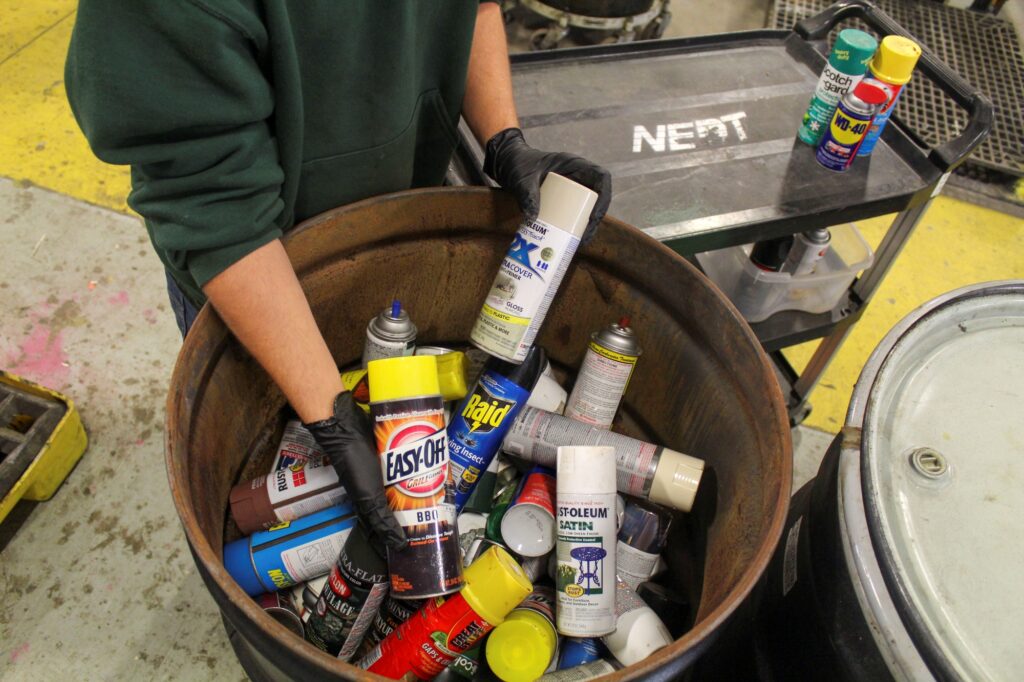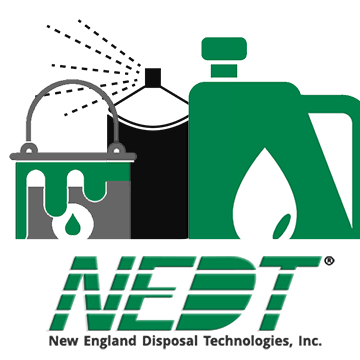There are few heavy-duty cleaners for the home more potent than the aerosol containers that hold the caustic cleaning chemicals in over cleaners & soot removers. Designed to remove the most baked-on foods in ovens and grills and the buildup of creosote, tar, and other waste products in wooden stoves and fireplaces, these chemicals are dangerous to handle, store, and dispose of. Today, we’re looking at the chemicals that make these products challenging to use, finding disposal for them, and providing safety tips for use, storage, and removal, including using our services.
Chemicals Found in Oven Cleaners & Soot Removers
Below are some of the common chemicals found in these types of cleaners. These are also common in other heavy-duty cleaners, which you can learn more about here.
Sodium Hydroxide (Lye)
Commonly known as lye, sodium hydroxide or “caustic soda” is a highly corrosive cleaner widely found in these products. Lye and similar products cause these cleaners to have a high pH level, making them highly caustic—great for degrading and dissolving baked-on soot but irritating or even dangerous to the skin, eyes, and lungs. Proper precautions and protective gear should be used to avoid severe damage to skin and mucus membranes.
Solvents & Chlorides
Solvents cover a wide range of chemicals, from paint thinners to cosmetics products, but are generally flammable, toxic, and produce VOCs (see below). These solvents are used to dissolve, extract, or suspend other materials, and in oven cleaners and soot removers, dissolve “solutes” such as oil and grease. Chlorides can also be present, such as Methylene Chloride, which poses risks to the environment when improperly disposed of (other chlorides are found in pool water treatments).
Organic Ethers & VOCs
Other common ingredients are certain types of organic ethers, such as Butoxyethanol. These chemicals are commonly derived from petroleum or industrial alcohols. Like with the solvents above, these commonly let off airborne Volatile Organic Compounds (or VOCs) that pose health risks, which is why these products are recommended in well-ventilated areas with proper respiratory gear.
Dealing with These and Other Corrosive Cleaners
Start by making sure to read the labels before storage and disposal. Make sure to store them in the containers they come in (if those containers are no longer suitable, contact the manufacturer for instructions). When it comes to disposal, many of these cleaning products cannot be disposed of at home or in the garbage, as they pose hazards to the environment, waste and wastewater facilities, and related personnel due to contents and pressurization in aerosol cans.
If you’re uncertain about whether you can dispose of your products at home, don’t take the risk. Contact NEDT and learn what we accept to plan your trip today. From everyday household hazardous waste to specialty cleaners like muriatic acid, we’ve got you covered for disposal. Learn more about cleaning product disposal with our blog, and if you can’t make it to one of our locations, learn more about our home pick-up service for MA residents!




Leave a Reply